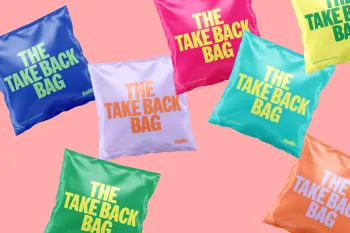A new study tracking microplastics in the bodies of mice in real time discovered a disturbing pattern, adding to a growing body of research suggesting a public health crisis could be at hand.
What's happening?
The researchers, who published their analysis in the journal Science Advances, used high-depth imaging techniques to monitor how microplastics — particles no more than 5 millimeters in length — impact blood flow in mice's brains.
The team fed mice water containing fluorescent spheres of polystyrene — a common type of plastic found in children's toys, packaging, and appliances. After observing particle movements, what they discovered was "like a car crash in the blood vessels," according to Haipeng Huang, a biomedical researcher at Beijing's Peking University who discussed the study with Nature.
According to the report, the situation occurred because the mice's immune cells "gobbled up" the microplastics, which became lodged in their brains, reducing blood flow and ultimately impacting their movements.
Why is this study concerning?
Even though researchers deliberately fed mice the plastic-laced water, the study is alarming because humans are unwittingly consuming microplastics or microplastic-tainted foods, as the particles have contaminated just about every corner of the Earth.
One estimate from Australia's University of Newcastle suggests the average person ingests up to a credit card's worth of plastic every week.
Past studies have connected microplastic exposure to cancer, dementia, reproductive difficulties, and other health problems. Scientists are still determining just how dangerous these particles are to human health, but the latest study doesn't alleviate those fears.
"The potential long-term effects of MPs on neurological disorders such as depression and cardiovascular health are concerning," the researchers wrote.
What can be done about microplastics?
The research team called for "increased investment in this area of research … to fully comprehend the health risks posed by MPs in human blood." Ultimately, fresh insights could provide healthcare systems with crucial information to better diagnose and treat patients.
|
Do you think America has a plastic waste problem? Click your choice to see results and speak your mind. |
However, reducing plastic usage is one of the best ways to prevent new microplastics from entering our environment. To that end, some companies, like Prana, are swapping out their plastic packaging for fully compostable alternatives. Others, like Best Buy, are reducing virgin plastic packaging by incorporating recycled materials.
Supporting brands committed to phasing out plastic — or at least eliminating virgin plastic, mostly derived from dirty fuels — is one way to contribute to a healthier future. You can also choose plastic-free products like metal razors and reusable lunch containers whenever possible.
Join our free newsletter for weekly updates on the latest innovations improving our lives and shaping our future, and don't miss this cool list of easy ways to help yourself while helping the planet.









